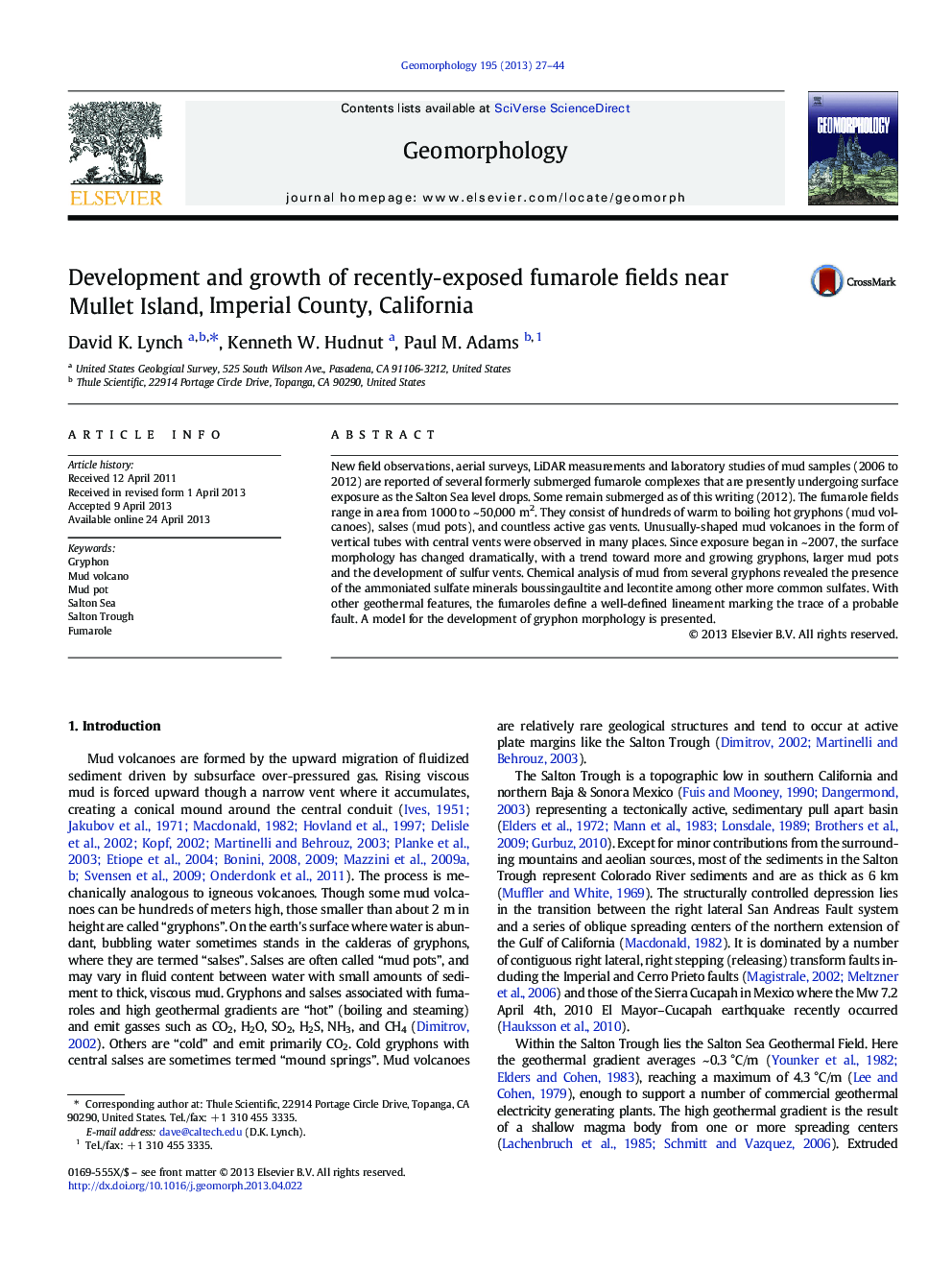| Article ID | Journal | Published Year | Pages | File Type |
|---|---|---|---|---|
| 4684824 | Geomorphology | 2013 | 18 Pages |
New field observations, aerial surveys, LiDAR measurements and laboratory studies of mud samples (2006 to 2012) are reported of several formerly submerged fumarole complexes that are presently undergoing surface exposure as the Salton Sea level drops. Some remain submerged as of this writing (2012). The fumarole fields range in area from 1000 to ~ 50,000 m2. They consist of hundreds of warm to boiling hot gryphons (mud volcanoes), salses (mud pots), and countless active gas vents. Unusually-shaped mud volcanoes in the form of vertical tubes with central vents were observed in many places. Since exposure began in ~ 2007, the surface morphology has changed dramatically, with a trend toward more and growing gryphons, larger mud pots and the development of sulfur vents. Chemical analysis of mud from several gryphons revealed the presence of the ammoniated sulfate minerals boussingaultite and lecontite among other more common sulfates. With other geothermal features, the fumaroles define a well-defined lineament marking the trace of a probable fault. A model for the development of gryphon morphology is presented.
